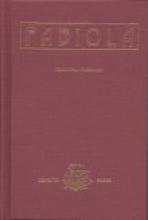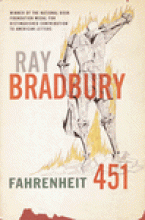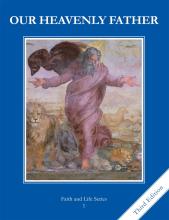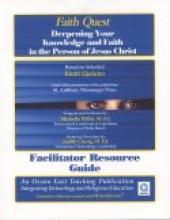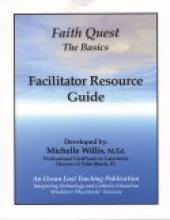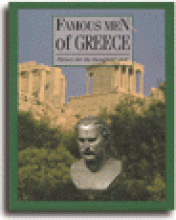No name
Fabiola, or the Church of the Catacombs
Fabiola is a Roman lady, a "noble pagan" of intelligence, virtue and spirit, who like many Romans of the time has heard nothing but false, vile reports of Christian beliefs and practices. At the same time she can't help contrasting the behavior of her young cousin, Agnes, her friend Sebastian, and her slave Syra with the corrupt brutality so rampant in pagan society. Without knowing that they are Christians, she senses that they are in light while she is still in darkness.
While Fabiola and her journey towards conversion is the focal point of the book, there are as many turns and side passages in the plot as there are in the catacombs. There is a subplot concerning an immature Christian who falls into apostasy and betrays his friends - but repents and is restored to grace. Another subplot concerns a martyr's son who longs to follow in his father's footsteps. A chapter is devoted to explaining the purpose of the catacombs and how the inscriptions came to be written within them. There is a lot to be learned from this book about an important time in Christian history. The descriptions of the martyrs' deaths are realistic, and because of this, and the length and ornate style of the book, it might be best read by teenagers and adults.
Originally published in the late 19th century, reprinted by Lepanto Press
Fahrenheit 451
Faith and Life Religion Series
This is a very popular religion series for Catholic homeschoolers. There are probably many reasons for this: they're reasonably priced, they're filled with beautiful selections of fine religious art, and they're unquestionably orthodox. The series incorporates questions from The Baltimore Catechism for memorization. Some homeschoolers don't like the brief content (the text contains approximately one lesson per week - although there is also a work book, teacher's manual and extensive resource guide available for each grade). Others are glad to have a solid text for the backbone of their religion curriculum that leaves room for lots of supplementing with Saints Stories, Bible study, memorization, service projects, devotions, celebrations of holy days, etc.
Please Note: The Seventh Grade book contains an examination of conscience in the back that touches upon sins that are unfortunately common among the type of youngsters that this series was aimed at (largely public school students who attend CCD) but might be better avoided with innocent homeschooled children. I don't believe that the series needs to avoided for this reason, but the segment, and in particular the word "masturbation" should probably be avoided at this age level.
Update: This series has been updated in the 2000s, with expanded activity books. It was updated again in 2016 and is now available as an online program with eBooks as well.
This series is available from most of the Catholic homeschool suppliers including many on our list of Favorite Suppliers.
Original series 1980s; Second Edition 2000s; Third Edition 2016.
Faith Charts: Catholicism at a Glance
5. You shall not kill (CCC 2318-30) - Commands us to respect the lives of others and our own, honoring our bodies as temples of the Holy Spirit. - Prohibits murder, abortion, suicide, euthanasia, sterilization, mutilations and non-therapeutic amputations, kidnapping, gluttony, drug use, drunkenness, seeking revenge, anger, hatred, and illegitimate war.Nicely illustrated with images of stained glass windows.
Faith Charts: The Bible at a Glance
Faith Quest: Deepening Your Knowledge and Faith in the Person of Jesus Christ
The course is divided into three modules. The first one aims to increase knowledge about the life and character of Jesus Christ, the second one focuses on the Lord's Prayer and getting to know God as Father, the third one focuses on Jesus's teachings in the Sermon on the Mount and how to live as Christians in the world. Each module has three or four lessons, for a total of 10 lessons. There is also a supplementary CD-ROM on the Ten Commandments.
The structure of the course is much like Faith Quest: The Basics. The curriculum is based on the CD-ROM which comes along with the Facilitator's Guide. You open the program and pick the lesson you are working on from the main menu. You can begin from the middle of a lesson if you left off without finishing. The first section of each lesson is on Vocabulary; the second section requires that you read the Youth Update, and the third section is a comprehension check to reinforce and review the information given in the Youth Update. For the first and third steps, there is a writing element as you write down the vocabulary or q&a on the reproducible sheets provided in the Guide.
When you have completed these steps, you can take the lesson Quiz. The quiz has true or false questions, a vocabulary bank, and multiple choice style questions. When a Module is completed, there is a paper crossword puzzle to review vocabulary, then a practice test on the computer, and then a Unit Test on paper.
The Facilitator's Guide contains instructions for how to install and use the software, a glossary of all the vocabulary words used in the curriculum, reproducible worksheets and quizzes, an answer key and "Youth Update" articles for each section of the course. The content of the course is based on these Youth Updates, which are nicely done several-color reprints of articles from St Anthony Messenger Press and have an Imprimatur. If you are using the program with more than one student, you need to get additional copies of these articles, and the address for ordering is in the Guide.
Both the paper material and the computer material are very nicely laid out, attractive without being flashy or distracting. The Youth Updates tie contemporary youth concerns and topics in with truths of our faith. The structure of the computer and paper parts of the course is designed to let the student work at his own pace and to provide plenty of review and practice. Since every lesson and module have an identical structure, once the student understands the method there are no surprises. He is free to work on mastering the actual content.
There is a supplementary Ten Commandments CD-ROM which covers the commandments and the vocabulary associated with them.
A complete religious education program needs to include some time for students to interact with real people, in discussion and involvement in the community and the church. This program in itself doesn't provide that. What it does provide is something that is often lacking in religious education nowadays: mastery of essential doctrine. This resource would work well as one component of a religious education class that had the technology: computer stations with WIN95 or higher and headphones. It takes most of the guesswork and dullness out of ensuring that every student knows basic terminology and concepts. Each student can work at his own pace, and each student must master the vocabulary and concepts before proceeding.
Faith Quest: The Basics
The Facilitator Guide includes an overview of the materials, Lesson Worksheets, Quizzes, Crossword Puzzles, Unit Practice Test, Unit Test, and Answer Keys.
When you turn on the program, you hear pleasant contemporary music as the title and other basic information comes on the screen. In fact, music is interspersed throughout the program. The instructions are easy to follow. Other than a computer, the only other requirement is that the student should be able to read. Because of the index menu, the student is able to leave off in the middle of a lesson and return to it later.
Lesson 1, Step 1 is vocabulary. A lovely picture is in the background, reflecting the beauty of God's creation, as the first vocabulary comes on the screen with a short, simple, and accurate definition. Throughout the program, there are various sound effects to catch the student's attention with the changes of the information, while the picture may remain the same. In step one, the sound effects accompany each new word. The picture only changes when moving from one step to the next. A pleasant woman's voice reads the word and the definition. At this point, the student should write down the definition he has just heard and read on his worksheet. This incorporates three senses. The student is listening, reading, and writing. When the student is ready, he clicks on the move ahead button.
In step two, a new background picture appears on the screen as the question on the worksheet with the answer come on the screen. Again, sound effects accompany the change of text, while keeping the picture the same. After the word and definition are given, the text changes (after the student clicks on the move ahead button) to a scriptural reference and/or a reference to the CCC. Because of the length of the text, there is no voice to accompany the reading of the text in this step.
After completing these steps, the screen changes again to the "Challenge" portion. In Lesson one, the student is asked to recite the Apostles Creed and explains the significance of knowing the Apostles Creed in defending our faith to others. For those who don't know it, the next section displays the Apostles creed on the screen along with music. In Lesson one, it closes with a Question and Answer. Not all lessons close with a final question.
At the end of the four lessons, there is a Unit 1 Practice Test on the computer, covering all four lessons. The first 20 are multiple choice questions. Questions 21-30 are true/false. Questions 31-40 are statements with two words highlighted as choices for answers. The student must click on the correct choice. A cymbal clashes with the correct answer. The final Unit test is only in the Facilitator's Guide.
In the Facilitator's Guide, after the overview of materials, the following sections are included.
Lesson 1 is "You Are a Special Creation of God." Step one is "Building Your Faith Vocabulary": Apostles, Creature, Creed, Crucified, etc. There are sixteen vocabulary words in lesson 1. In Step Two, the student answers fundamental questions such as "Who created the world?" There are references to the CCC or scripture throughout all the questions. The next section of Lesson 1 is a crossword puzzle on paper, reviewing the vocabulary in Step One. The next section is a Quiz that includes matching and fill in the blank.
The next three lessons cover: The Nature and Mystery of God; Creation, Angels, and Original Sin; and Understanding the Meaning and Nature of Sin (all with a similar format to the first lesson). Although the format may not seem like much material, the student should have a through grounding in these topics when he is finished.
I think this program is ideally suited for the student who is used to a lot of media stimuli. It concentrates on "sound bite" messages with a grounding in the basics with scriptural references and the Catechism of the Catholic Church.
Because the program incorporates all the senses and the student can go at his or her own pace and go back and review at any time, I can also see this program as ideal for the special needs student who has difficulty reading or processing information or retaining large chunks of information, Since the student sees the words on the screen as well as hears them spoken, and then writes the definition down, retaining information should be easier. For a student who has English as a second language, this would also be a good program provided the student has at least minimal reading skills. A mentor could also read the longer sections and explain them as needed. This program would also be ideally suited to the student who needs foundational knowledge or who needs a basic review.
The program is visually appealing as well as well presented and gives a through grounding in the faith. Another advantage to the program is that the student is able to work at his or her own pace. Because of the crossword puzzles, quizzes, and tests, the teacher can easily determine whether or not the student is grasping the material.
Since the program has the student working primarily independently, the teacher should set aside some additional time to discuss and apply what the student has learned to real life situations.
Imprimatur
Famous Figures of Ancient Times
More info available at the publisher's website: www.figuresinmotion.com
Famous Men of Greece
The introduction gives a brief description of the pantheon of mythical gods and goddesses of Greece. The book explains that this is how the Greek citizen of ancient times would have started with the historical record -- that though we call these stories "myths" now, they tell us something about how the people thought in those days. From there, the first nine chapters cover figures of legend -- where possible truth is mixed with make-believe. These stories are also important to Greek history, because they show what the Greeks valued in their heroes and the stories they learned and told to each other. Starting with Chapter X on Lycurgus the Spartan who lived in the 9th century B.C., we reach the actual historical record. The book advises the student to learn to discern between history, legend and myth in his reading and to ask himself "What things in this story could really have happened?"
My children, who use this book as a history spine in 4th grade, have all loved these tales of Greek heroes and statesmen. In addition to showing the continuum between legend and historical records, these books provide what to me is of first importance: lessons in evaluating people and events through an ethical, Christian perspective. History learned by stories is more easily remembered for children grades 3 to 7 than lists of facts and details to memorize for tests. Also, this is the way the ancients themselves learned and wrote history; showing the importance of their values through the lives of their good and their bad leaders.
Copyrights 1904/1989

